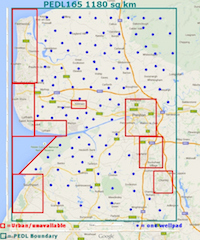You’d think you could trust the Royal Society
Of all the scientific institutions which grace our land you’d think that the Royal Society would set a standard for academic rigour which would be unimpeachable.
Cuadrilla would like you to believe so. They set great store by the Royal Society’s Report “Shale gas extraction in the UK: a review of hydraulic fracturing” which was published in June 2012 which said:
“the health, safety and environmental risks associated with hydraulic fracturing… as a means to extract shale gas can be managed effectively in the UK as long as operational best practices are implemented and enforced through regulation. Hydraulic fracturing is an established technology that has been used in the oil and gas industries for many decades. The UK has 60 years’ experience of regulating onshore and offshore oil and gas industries”
But just how much scientific rigour lies behind the report. We are becoming increasingly concerned to find that the authors of this report appear to be happy to print “evidence” without checking the facts. Two examples have came to light recently.
Firstly when we asked Professor Peter Styles of Keele University to support his claim that 200 wells had been fracked in the UK, he immediately referred us to this report which clearly states that:
“Over the last 30 years more than 2,000 wells have been drilled onshore in the UK, approximately 200 (10%) of which have been hydraulically fractured to enhance recovery”
However, when questioned the Royal Society admitted immediately that they simply accepted what the DECC had told them. When challenged the DECC admitted that they had no evidence to support the assertion, which was based on responses to “enquiries to the operators”.
As a one off this might not be too bad, but today we had cause to check another assertion in the report. Namely that
the amount of water “needed to operate a hydraulically fractured shale gas well for a decade may be equivalent to the amount needed to water a golf course for a month”.
Regular readers may recall that we are not impressed with this claim, that has been repeated ad nauseam elsewhere and is clearly at odds with the facts. However, it was being presented to us as “fact” today based on its inclusion in the Royal Society report, so we dug a bit deeper. We didn’t have to do too much validation before we were saying “Here we go again …”
The Royal Society report cites the report “Gas Works? Shale gas and its policy implications” by Simon Moore 2012 as its source for this information.
Sure enough the Moore report does state on page 49 that “5 million (US) gallons (≈19,000 cubic metres) of water is … The amount needed to water a golf course for a month
Note 75 provides a convenient link to a document from the fracking company Chesapeake Energy called ‘Water Use in Deep Shale Gas Exploration’;
[Edit: That link has now died but the same document can still be found here https://www.ourenergypolicy.org/wp-content/uploads/2013/10/water_use_fact_sheet.pdf ]
where we can read
As this is an industry PR sheet there is no evidence provided to back up this statement and there is no source provided.
So here we have it – twice in one report we can see that that august body, the Royal Society, has provided as fact information which, had they bothered to check they would have found to be dubious. In the case of the 200 wells it relies entirely on anecdotal and unsupported evidence from the oil and gas industry itself, and in the case of the golf course analogy, it comes, quite easily traceably to anyone who is interested in the accuracy of the data in the report, straight from a fracking company’s PR department with no substantiation provided whatsoever.
Once might be careless. Twice starts to look decidedly questionable doesn’t it?


































